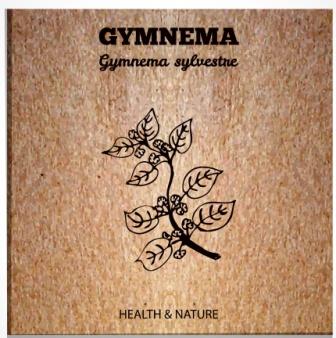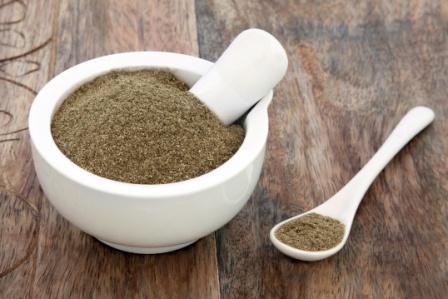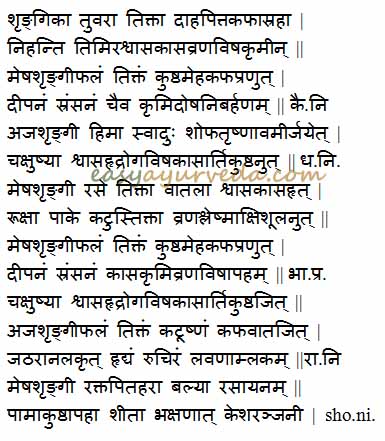Gudmar Gymnema sylvestre Benefits, Remedies, Research, Side Effects
Madhunashini – Gudmar, is a herb popularly known for its anti- diabetic action and is mentioned in Ayurvedic treatment of diabetes, renal calculi, cough, snake poison and jaundice.
Latin name- Gymnema sylvestre R.Br.
Family- Asclepiadaceae (Arka Kula)

Table of Contents
Vernacular names
Gurmar – Names in different languages:
English name – Gymnema, Cowplant, Australian Cowplant
Hindi name- Gudmar, Gurmar
Bengali name- Medasinghi
Gujarathi name- Kavali, Gudamar
Kannada name- Madhunashini
Konkani name- kawli
Marathi name- Kavali, Bedakicha phala
Malayalam name- Madhunashini, Chakkarakolli
Oriya name- Mrygosingo
Tamil name- Shirukurinjan
Telugu name- Podapatri, Vodaparthi
Urdu name- Sasinga
Sanskrit Synonyms
Madhunashini – Destroys the sweet taste, when the leaf is chewed, it becomes hard for the tongue to perceive the sweet taste for 10 – 15 minutes.
Vishani- Destroys the poison
Meshashrungi, Basta shrungi, Shrungika, Ajashringi- Leaf resemble the horn of goat
Tiktadugdha- The juice coming from the plant is bitter
Shree Vruksha – auspicious
Vartika – climber,
Padavruksha, Ghanashrungi, Bahalangaka, Bahalanga, Bahalachakshusha, Vishanika, Kurchaparni,
Sarpadanstra, Akshibheshaja,
Classical categorization
Bhavaprakasha- Guduchyadi varga
Dhanvantari Nighantu- Guduchyadi varga
Kaiyyadeva Nighantu- Oushadhi varga
Raja Nighantu- Prabadradi varga
Morphology
Madhunashini is a climber with the stem being weak and covered with small hairs. The leaf is 1-1.2 inch long, ovate elliptical and having small hairs on both the surface. The flowers are pale yellowish green. The flowers are seen in the month of August to September and the fruits are seen in the month of January to March. The plant is seen all over India in the temperate climate.
Properties, part used, dosage
Properties:
Rasa (Taste) – Kashaya (Astringent), Tikta (Bitter)
Guna (Qualities) – Laghu (Light), Ruksha (Dry)
Vipaka – Katu (Undergoes Pungent taste after digestion)
Veerya (Potency) – Ushna (Hot)
Karma (Actions) – Kaphavata shamaka (reduces vitiated kapha and vata dosha)
Part used- Leaf, Root
Dosage-
Decoction- 40 to 80 ml
Powder- 5 to 6 g
Chemical constituents
Gymnema sylvestre Chemical constituents:
Gymnemagenin, the main sapogenin in the leaves, yielded 3.9–4.6% of total gymnemic acids. The leaf also contains quereitol. Apart from these, the whole plant contains Gymnemine, Gymnemagenin and Gypenosies.
Uses
Uses of Meshashringi:
- If the juice of the leaf is consumed or if the leaf is chewed, then the tongue loses the perception of sweet taste for a few hours.
- The fresh juice of the plant Gymnema sylvestre increases the appetite and stimulates the liver for better functioning.
- The paste of the root of Gymnema sylvestre is applied over the area bitten by the snake, to reduce the effect of poisoning and reduce swelling.
- The paste of the root is mixed with castor oil in area affected with swelling and abdominal area in cases of splenomegaly and hepatomegaly.
- The decoction of the Meshashringi is given in a dose of 40-50 ml to treat dysmenorrhea, fever, renal calculi and difficulty in micturition.
- The powder of the seed of Meshashringi is given with honey to treat dyspnea and cough.
- The fresh juice of the root of the plant is given in a dose of 25-30 ml to treat snake poisoning.
- The powder of the dried leaf (4 to 6 g) or fresh juice (25-30 ml) of leaf is given to reduce the sugar level in the blood.
- The paste of the leaf is applied over the area affected with skin diseases.

Indications
Uses of Gurmar as per Ayurveda:
Chakshushya – improves vision, good for eyes, useful in eye disorders
Indication:
Daha – burning sensation, as in gastritis, neuropathy, burning sensation in eyes etc
Asra – blood disorders such as abscess, skin disorders, bleeding disorders such as menorrhagia, nasal bleeding etc.
Shopha – inflammation
Trushna – excessive thirst
Vami – vomiting
Shwasa – asthma and chronic respiratory disorders
Hrudroga –cardiac disorder
Visha – Toxic conditions, poisoning
Kasa – cough, cold
Kushta – skin diseases
Vrana – Ulcers, wounds
Raktapitta –Bleeding disorders such as nasal bleeding, heavy periods, etc
Pama – Keloids, Papules
Kesharanjini –Gives natural black colour to hair.
Gudmar Fruit:
Tikta – bitter
Deepana – improves digestion strength
Sramsana – mild laxative
Hrudya – acts as cardiac tonic, congenial for heart
Indicated in
Kushta – skin diseases
Meha – diabetes, urinary tract disorders
Krumi – worm infestation
Sanskrit verse

Adverse effects, Research
Adverse effects of Madhunashini: Increased or irregular intake of Meshashringi can bring down the blood sugar level below normal leading to hypoglycemia.
Research on Gymnema sylvestre:
It is used totally all over India for controlling blood sugar. Several bio-active compounds have been isolated from the herb for diabetes care. ()
Interaction with medicines, supplements
Can this be used while taking Homeopathic medicine?
Yes. This product does not react with homeopathic medicine.
Can this medicine be continued while taking supplements like multivitamin tablets, Omega 3 fatty acids etc?
Yes. Generally, this product goes well with most dietary supplements. However, if you are taking more than one product per day, please consult your doctor for an opinion.
With western
medicines
Seek your
doctor’s advice if you are taking this product along with other western
(allopathic / modern) medicines. Some Ayurvedic herbs can interact with modern
medicine.
If both Ayurvedic and allopathic medicines are advised together, then it is
best to take Allopathic medicine first, wait for 30 minutes and then take the
Ayurvedic medicine.
Use in Rasashastra
Uses in Rasashastra – metallic Ayurveda medicines:
Gymnema is used in the process of purification of Vimala (Iron pyrite). Vimala is tied in a pack and sudation (Swedana) is given with the leaf juice extract of gymnema for 3 hours.
Ayurvedic medicines
Ayurvedic medicines containing Mesh shringi:
Bio- Gymnema capsule: Bio-Gymnema Capsule is a proprietary Ayurvedic medicine. It is an anti-diabetic drug useful to reduce blood sugar levels and to manage complications associated with diabetes.
Debix tablet: It is a proprietary Ayurvedic medicine. It is a nervine tonic, strengthens organs and improves cellular metabolic activity. It stimulates Beta cells of Langerhans for the insulin secretion. It inhibits absorption of carbohydrates from the intestine into the blood.
Glukostat capsule: Glukostat capsule is a pancreatic stimulant and insulin sensitizer. It is a proprietary Ayurveda medicine. The capsule restores elevated blood sugar level to normal.
It stimulates the pancreas to secrete insulin and increases cell receptor sensitivity to the available insulin.
Diabegon capsule: It is a proprietary Ayurvedic medicine indicated in Ayurvedic treatment of Diabetes mellitus and associated complaints.
Amritamehari churna: Amritamehari churnam is an Ayurvedic medicine in herbal powder form used for the treatment of diabetes. The medicine is also useful to reduce weakness and good in bladder ailments.
Limit capsule: It is a proprietary Ayurvedic medicine indicated in Ayurvedic treatment of Non-insulin dependent diabetes mellitus.
Author: Dr.B.K.Prashanth M.D (Ayu), Ph.D
E mail: [email protected]
Substitute
Gymnema hirsutum
Gymnema montanum
Sthanika Karma
Externally – Root paste is indicated in snake poisoning. Its leaf paste with caster oil is beneficial in lymphadenitis, liver and spleen enlargement, and helps to reduce edema.
Internally
Digestive system – Stimulate liver Indicated in constipation, loss of appetite, and in Jaundice. Liver stimulant.
Circulatory System – Stimulates heart. Indicated in weakness of heart
Respiratory System – Help to pacify kapha dosha. Its seed powder is indicated in running nose, cough, breathing difficulties etc. Its root bark can be used for fumigation in these disorders and also good for heaviness of the head..
Excretory system – Increase urine output., Indicated in difficulty in urination, urinary calculi etc.
Reproductive system – Stimulate uterus, so indicated in oligomenorrhea.Tapakrama – Indicated in fever (Vishama jvara)
Satmikarana – Root decoction is indicated in snake poison, and leaf powder is beneficial in Diabetes mellitus (Madhumeha) and Ikshumeha. In Animal studies it is proven that it stimulates insulin production and helps to reduce blood sugar levels.











One comment
Ravi
What is the cause of diabetes (one main root cause like vitiation of vata in artheritis) in Ayurveda? How come this herb doesn’t affect PITTA , it is largely astringent !